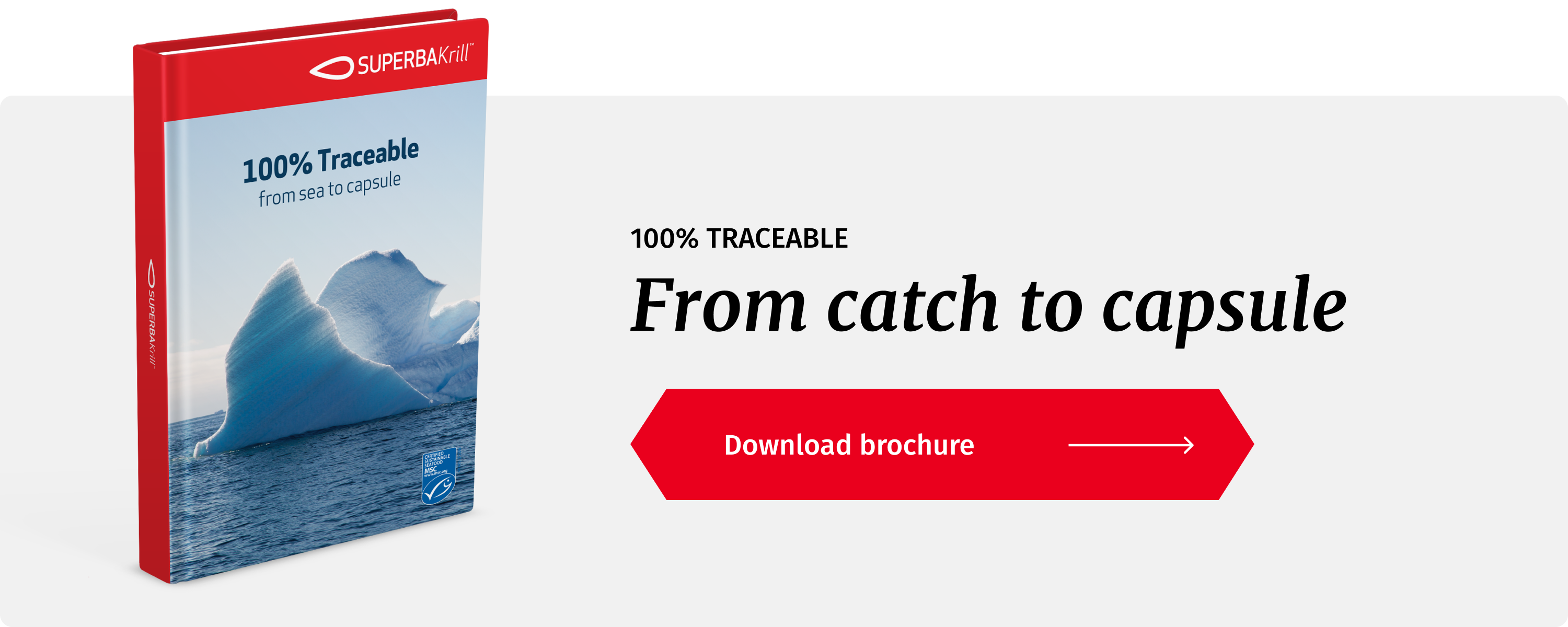There is no question that we need omega-3s as they offer a multitude of health benefits from heart to brain, joints, skin and much more.
Krill oil, in particular, is an emerging omega-3 supplement that is unique on many levels. That being said, many of us take our krill capsules each day, but may not think about how powerful these little creatures really are.
So what are krill and where do they come from? Let’s take a look deep under the Southern Ocean to find out more.
Named after a fish, but NOT a fish
Interestingly, the word “krill” is Norwegian and means small fry of fish, but krill are not fish. Krill are small, shrimp-like crustacean with big black eyes and a reddish, semi-transparent body. Krill oil definitely differs from fish oil.
Not all omega-3s fatty acids are created equal as there are differences in how they are delivered in the body. Krill oil provides EPA and DHA omega-3 mainly in the form of phospholipids and it enters the body differently than triglyceride based omega-3s. In addition to phospholipids, krill oil contains choline and astaxanthin.
Krill fun facts
- Superba Krill™ oil is made from Euphausia Superba
- Krill are wild
- Krill cannot be farmed or raised
- On average, krill weigh less than an ounce
- Krill’s digestive systems look bright green from the plant pigments they consume
Krill, one the largest biomasses on earth
Krill, a species of zooplankton invertebrates, exist in every ocean around the globe.Antarctic Krill, also known as Euphausia superba, are among the largest of the 85 known krill species and make up one of the world’s largest single species marine biomass.
They move in huge swarms throughout Antarctic waters and feed on microscopic algae. There are approximately 125 million tons to 6 billion tons of krill in the waters around Antarctica and at certain times of year, their swarms are so dense and widespread that they can actually be seen from space!
Read more about The Krill Advantage
Small, yet mighty
Equal to the size of a paper clip (approximately 2 inches in length), krill are small, yet massive in regards to their importance in the food chain.
Antarctic krill are a keystone species of the ecosystem, serving as the main prey for fish, whales, penguins and seals.
But as quickly as krill are eaten, the population is rapidly replaced by their growth and reproduction. And since krill are low in the food chain, they don’t accumulate heavy metals and contaminants to the degree that other marine species do.
Krill can be found in various parts of the ocean, from the surface layer to mid water and even near the ocean floor, and they can even undertake daily vertical migrations. Antarctic Krill can change size, shape and habitat as they grow, and they can live to be 11 years old.
Krill might be small, but their benefits are significant, and their journey is pretty interesting too.


